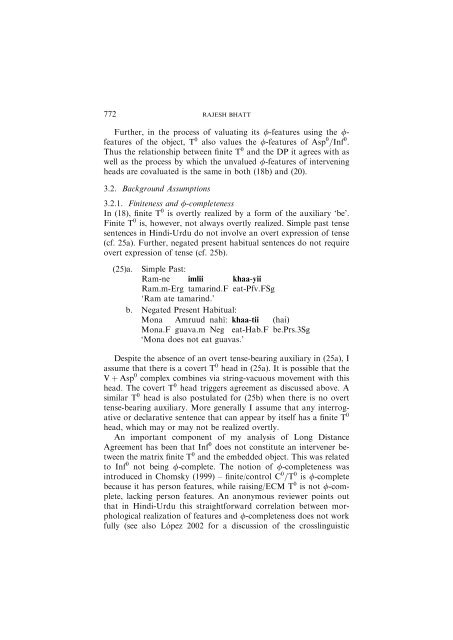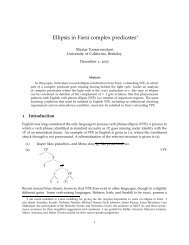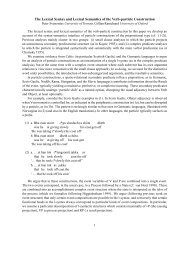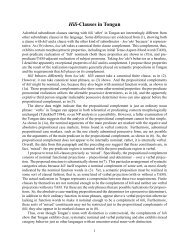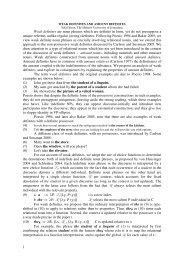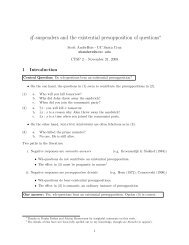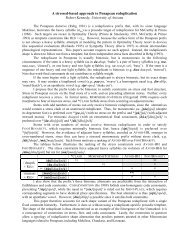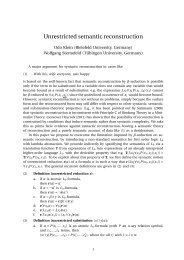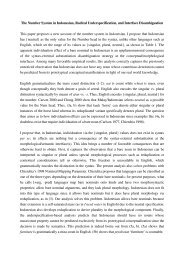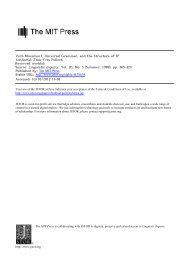LONG DISTANCE AGREEMENT IN HINDI-URDUw This paper ...
LONG DISTANCE AGREEMENT IN HINDI-URDUw This paper ...
LONG DISTANCE AGREEMENT IN HINDI-URDUw This paper ...
You also want an ePaper? Increase the reach of your titles
YUMPU automatically turns print PDFs into web optimized ePapers that Google loves.
772RAJESH BHATTFurther, in the process of valuating its /-features using the /-features of the object, T 0 also values the /-features of Asp 0 =Inf 0 .Thus the relationship between finite T 0 and the DP it agrees with aswell as the process by which the unvalued /-features of interveningheads are covaluated is the same in both (18b) and (20).3.2. Background Assumptions3.2.1. Finiteness and /-completenessIn (18), finite T 0 is overtly realized by a form of the auxiliary ‘be’.Finite T 0 is, however, not always overtly realized. Simple past tensesentences in Hindi-Urdu do not involve an overt expression of tense(cf. 25a). Further, negated present habitual sentences do not requireovert expression of tense (cf. 25b).(25)a. Simple Past:Ram-ne imlii khaa-yiiRam.m-Erg tamarind.F eat-Pfv.FSg‘Ram ate tamarind.’b. Negated Present Habitual:Mona Amruud nah~: khaa-tii (hai)Mona.F guava.m Neg eat-Hab.F be.Prs.3Sg‘Mona does not eat guavas.’Despite the absence of an overt tense-bearing auxiliary in (25a), Iassume that there is a covert T 0 head in (25a). It is possible that theV þ Asp 0 complex combines via string-vacuous movement with thishead. The covert T 0 head triggers agreement as discussed above. Asimilar T 0 head is also postulated for (25b) when there is no overttense-bearing auxiliary. More generally I assume that any interrogativeor declarative sentence that can appear by itself has a finite T 0head, which may or may not be realized overtly.An important component of my analysis of Long DistanceAgreement has been that Inf 0 does not constitute an intervener betweenthe matrix finite T 0 and the embedded object. <strong>This</strong> was relatedto Inf 0 not being /-complete. The notion of /-completeness wasintroduced in Chomsky (1999) – finite/control C 0 =T 0 is /-completebecause it has person features, while raising/ECM T 0 is not /-complete,lacking person features. An anonymous reviewer points outthat in Hindi-Urdu this straightforward correlation between morphologicalrealization of features and /-completeness does not workfully (see also Lo´pez 2002 for a discussion of the crosslinguistic


